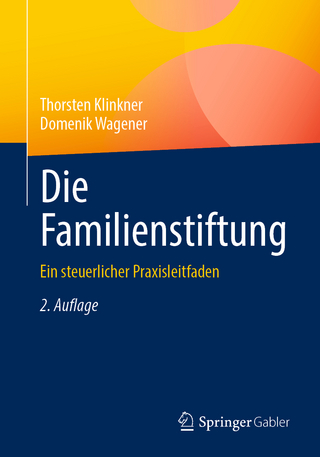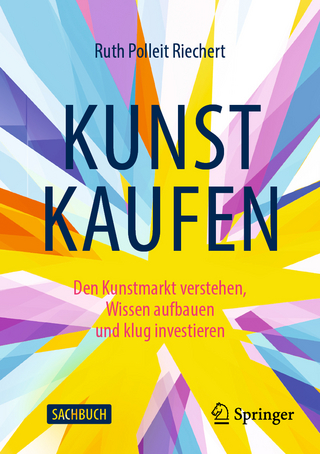
Getting Started in Alternative Investments
John Wiley & Sons Inc (Verlag)
978-1-119-86028-0 (ISBN)
In this book, the authors discuss investments as varied as catastrophe bonds and non-fungible tokens, as well as the growing influence of the ESG (Environmental, Social, and Governance) movement on different financial instruments. It also examines:
More "traditional" alternatives to typical securities, like venture capital, private equity, and real estate-related investments
"Modern" alternative investments, including alternative finance (e.g., peer-to-peer lending), insurance-linked securities, and impact investing
Niche assets, such as intellectual property (e.g., royalties and patents), fractional ownership of collectibles, and income-sharing agreements
Getting Started in Alternative Investments is a must-read book for individual and retail investors, as well as investment and finance professionals seeking to expand their investment horizons beyond traditional stocks and bonds.
Matthew Dearth, PhD is Adjunct Faculty of Finance at Singapore Management University, where he teaches graduate-level finance courses on sustainable investing and alternative investments. He is Managing Director at Silvercrest Asset Management, a leading independent advisory and financial services firm created to provide traditional and alternative asset management and focused family office services to wealthy families and select institutional investors. Swee Yong Ku is a founder of International Property Advisor, a licenced real estate consultancy. He was an adjunct faculty at the Singapore Management University’s Lee Kong Chian School of Business and at the National University of Singapore’s Department of Real Estate. His recent research interests are focused on the impact that technology has on the built environment and consequently how real estate investments and finance may be affected.
Acknowledgments ix
About the Authors xiii
Introduction 1
Chapter 1 Introduction to Alternatives 5
1.1 What Are Alternatives? 6
1.2 Investing in Alternatives 8
1.3 Diversification 34
1.4 Regulation 36
1.5 Summary 41
Notes 42
Chapter 2 Traditional Alternatives 45
2.1 Venture Capital 46
2.2 Private Equity 55
2.3 Hedge Funds 66
2.4 Infrastructure 79
2.5 Land and Commodities 82
2.6 Funds of Funds 88
2.7 Summary 89
Notes 90
Chapter 3 Real Estate 93
3.1 The Global Real Estate Market 93
3.2 Structure of This Chapter 94
3.3 Characteristics of Real Estate 95
3.4 Classifying Real Estate Segments 96
3.5 Real Estate Valuation 101
3.6 Due Diligence 105
3.7 The Four Quadrants of Real Estate Investment 106
3.8 Future Trends in Real Estate 113
Chapter 4 Modern Alternatives 119
4.1 Private Credit and Alternative Finance 119
4.2 Insurance- Related Finance 128
4.3 Impact Investing 132
4.4 Blockchain, Coins, and Non- Fungible Tokens 136
4.5 Real Estate Tokenization and the Metaverse 143
4.6 Collectibles 151
4.7 Other Opportunities 159
Notes 163
Chapter 5 Building Portfolios 167
5.1 The Portfolio Management Process 167
5.2 Traditional Portfolios 170
5.3 Mean- Variance Optimization 171
5.4 Adding Alternative Investments 173
5.5 The Endowment Model 174
5.6 Risk Budgets, Risk Parity 174
5.7 Summary 176
Notes 177
Appendix Real Estate Investments 179
A.1 The Characteristics of Real Estate as an Asset Class 179
A.2 Classifying Real Estate Segments 183
A.3 Analyzing the Real Estate Segments 186
A.4 Real Estate Valuation 214
A.5 Due Diligence 228
A.6 The Four Quadrants of Real Estate Investment 229
Notes 272
About the Website 273
Index 275
| Erscheinungsdatum | 26.04.2023 |
|---|---|
| Reihe/Serie | Getting Started In... |
| Verlagsort | New York |
| Sprache | englisch |
| Maße | 150 x 229 mm |
| Gewicht | 340 g |
| Themenwelt | Wirtschaft ► Betriebswirtschaft / Management |
| ISBN-10 | 1-119-86028-8 / 1119860288 |
| ISBN-13 | 978-1-119-86028-0 / 9781119860280 |
| Zustand | Neuware |
| Haben Sie eine Frage zum Produkt? |
aus dem Bereich


